Physics Module 4: Electrons, waves and photons
1/166
Earn XP
Description and Tags
doesn't include core practicals !!
Name | Mastery | Learn | Test | Matching | Spaced |
|---|
No study sessions yet.
167 Terms
define current
rate of flow of charge
relationship between current, charge and time
I = Q/t
current in metals
rate of flow of electrons
current in electrolytes
rate of flow of ions
unit of charge
coulomb (C)
what is one coulomb
amount of charge transported by a constant current of one ampere in one second.
elementary charge
1.6x10^-19 C
charge of a proton (in terms of e)
+e (1.6×10^-19C)
charge of an electron (in terms of e)
-e (-1.6×10^-19C)
the net charge of any particle is…
a multiple of e (the elementary charge)
net charge formula
Q = ne (where n is an integer)
what is conventional current
flow of positive charge from positive to negative terminal
what is the direction of electron flow
negative terminal to positive terminal
electrons are repelled by the negative terminal, and attracted to the positive terminal
state kirchoff’s first law
the sum of currents entering a junction equals the sum of currents leaving that junction
Iin = Iout
which conservation law supports kirchoff’s first law
the conservation of charge
[charge cannot be created or destroyed. the total charge in a system is constant and conserved]
in series, current is…
equal throughout the circuit, as there are no junctions
in parallel, current is…
shared, as there are junctions
mean drift velocity
average velocity of electrons as they move through a wire
mean drift velocity formula
I = nave
[current = electron number density x area x mean drift velocity x elementary charge]
electron number density
number of free electrons per unit volume
relationship between current and mean drift velocity
proportional
relationship between area and mean drift velocity
inversely proportional
relationship between elementary charge and mean drift velocity
inversely proportional
relationship between electron number density and mean drift velocity
inversely proportional
In “I = nave”, what is “n”?
the number density of charge carriers (electrons)
how is electron number density related to conductivity
conductivity is controlled by how many free electrons/mobile ions there are to carry current.
the more charge carriers (the higher the number density), the more conductive the material is.
explain conductors, semiconductors and insulators in terms of electron number density
conductors have a high electron number density
semiconductors have an intermediate electron number density
insulators have a low electron number density
what’s the difference between a cell and a battery
a cell is a single device, a battery is multiple cells
thermistor symbol
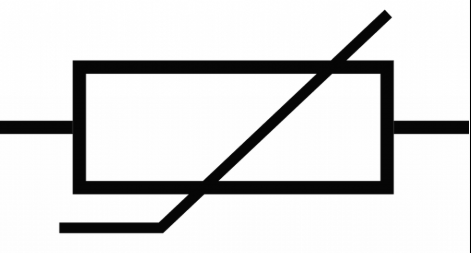
diode symbol
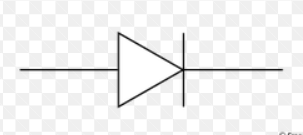
light-dependent resistor symbol
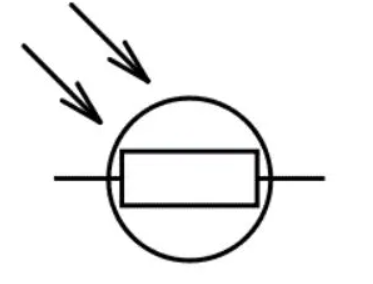
potentiometer symbol
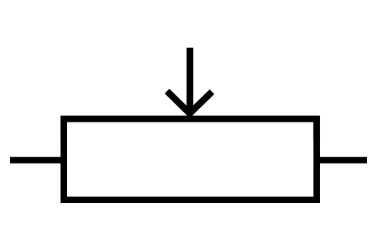
LED symbol
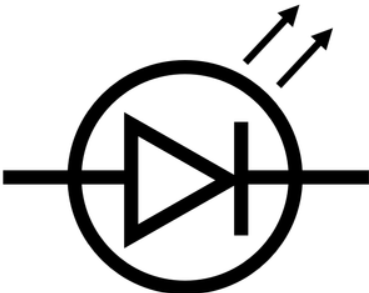
potential difference
energy transferred from electrical energy to other forms per unit charge (work done per unit charge)
what is 1 volt
1 joule of energy transferred per coulomb
electromotive force (e.m.f)
energy transferred from other forms into electrical
(work done on charge carriers)
relationship between emf, work done and charge
V = W/q
how does an electron gun work
the cathode (hot filament) is heated by a low potential difference. this causes it to release electrons by thermionic emission
a high potential difference between the cathode and anode accelerates the electrons towards the anode. During this, electrical energy is converted to KE
The anode has a small gap, so the electrons are fired through the gap to form a narrow beam travelling at constant velocity
how is eV=1/2mv2 derived from the electron gun?
the work done on an electron by the electrical field id given by “W = qV”. In this case, the charge (q) is the charge of an electron - the elementary charge, e. thus W=qV → W=eV
As all electrical energy is converted to kinetic when the electrons are fired, “eV” (the electron volt) is the KE of an electron accelerated across a p.d. of 1V
Once the electron reaches the anode, its KE is equal to the work done on the electron by the electrical field. This means KE=W=eV.
Thus, KE=1/2mv2 → eV = 1/2mv2
resistance
measure of the opposition to the flow of current in a circuit
relationship between resistance, voltage and current
R = V/I
what is 1 ohm
a 1 volt per unit ampere
ohm’s law
for a metallic conductor kept at constant temperature, the current in the component is directly proportional to the p.d across it
[V = IR]
ohmic device
components which follow ohm’s law
non-ohmic device
component which doesn’t follow ohm’s law
relationship between resistance and current in non-ohmic devices
the component’s resistance increases with current:
current across component is increased, increasing temperature
metal ions are heated, gaining KE and vibrating in the lattice
as the ions move more, the frequency of electron-ion collisions increase
more work is done on the charge carriers, so resistance is increased
relationship between resistance and current in ohmic devices
the component’s resistance remains constant with current:
current across the component is increased
metal ions vibrate, but don’t gain KE
no matter changes in current, the average frequency of electron-ion collisions per unit time remains constant
there is no net change in work done, thus resistance is constant
I-V Characteristic
graph showing the relationship between current and voltage in a component
current is on the y axis, voltage is on the x axis
resistance is 1/gradient
examples of ohmic components
fixed resistor
wire
potentiometer
I-V characteristics of ohmic components
linear graph - straight gradient
as current increases, voltage increases
examples of non-ohmic components
filament lamp
ntc thermistor
diode
LED
I-V characteristic of a filament lamp
lamp is ohmic at small values of current
as current increases, heating effect on metal ions causes resistance to increase
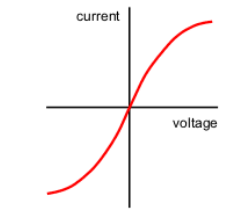
I-V characteristics of an ntc thermistor
as the temperature/current increases, resistance decreases.
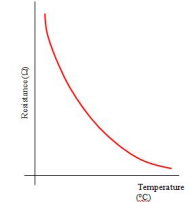
relationship between light intensity and resistance in an LDR
as light intensity increases, resistance decreases
resistivity
a property that describes the extent to which a material opposes the flow of electric current through it
resistivity is a constant, and a physical property of the material
resistivity equation
R = ρL/A
[resistance = (resistivity x length)/area]
relationship between resistivity and temperature in metals
as temperature increases, resistivity increases:
as temperature increases, metal ions gain KE
ions vibrate more, increasing the frequency of electron-ion collisions
more collisions = higher resistance. as resistance is proportional to resistivity, resistivity also increases
relationship between temperature and resistivity in semiconductors
as temperature increases, resistivity decreases:
as temperature increases, the number density of charge carriers increases. this causes resistance to decrease.
as resistance is proportional to resistivity, resistivity also decreases
relationship between temperature and resistance in an ntc thermistor
resistance decreases as temperature increases:
as temp increases, the number density of charge carriers increases.
consequently, resistance decreases
relationship between power, voltage and current
P=V/I
relationship between power, voltage and resistance
P=V2/R
relationship between power, current and resistance
P=I2R
electrical power
rate of energy transfer in a component
formula for energy transfer
W = VIt
[energy = voltage x current x time]
kilowatt-hour
energy transferred by a device with a 1kW power rating in 1 hour
kWh is used to calculate the cost of electrical appliances
Kirchoff’s second law
In any circuit, the sum of e.m.f is equal to the sum of p.d around a closed loop
which conservation law supports kirchoff’s second law
conservation of energy:
energy cannot be created or destroyed, only conserved.
resistance in series
RT= R1+R2
resistance in parallel
1/RT = 1/R1 + 1/R2
what does a source of emf have
internal resistance
lost volts
difference between the p.d. of the power supply and the e.m.f. of the cell
equal to p.d. across the internal resistor
terminal p.d.
the p.d. across the terminals of a cell
(when there’s no internal resistance, p.d. = emf)
relationship between internal resistance and emf
E = I(R+r)
[emf = current x (resistance + internal resistance)
relationship between internal resistance and terminal p.d.
V = E - Ir
[terminal pd = emf - (current x internal resistance)]
what is a potentiometer
variable resistor with a slider
how do potentiometers work
sliding contact divides the potentiometer into two parts - one with a higher resistance, and one with a lower resistance. this changes Vout
if the slider is moved up, the resistance of the lower half increases, increasing the p.d. across it
potential divider equation in terms of R and Vin
Vout = (R2/RT) x Vin
potential divider equation in terms of V1 and R1
V1/V2 = R1/R2
progressive wave
an oscillation that transfers energy without transferring any matter
longitudinal wave
wave that oscillates parallel to the direction of energy transfer/propagation of the wave
transverse wave
wave that oscillates perpendicular to the direction of energy transfer/propagation of the wave
wave displacement
the distance of a point on the wave from its equilibrium or rest position
amplitude
the maximum displacement on a wave
wavelength
the distance between two identical points on adjacent wave cycles
period
the time taken to complete 1 oscillation
phase difference
the difference in position between two waves or points on a wave
measured in degrees/radians
frequency
the number of complete oscillations that pass a given point in one second
wave speed
the distance a wave travels in a specific amount of time
relationship between frequency and time
f = 1/T
relationship between wave speed, frequency and wavelength
v = fλ
reflection
when a wave hits a boundary between two media, and the wave bounces back into the original medium instead of passing through the boundary
refraction
when a wave passes a boundary into a new medium, causing a change in speed and change in direction
how does the density of the new material affect refraction
if the density of the new material is higher, the wave bends towards the normal (greater change in direction) and slows down
if the density of the new material if lower, the wave bends away from the normal, and speeds up
polarisation
when waves only oscillate in one direction perpendicular to the direction of energy transfer / propagation of the wave
can only occur in transverse waves
diffraction
the spreading out of waves as they pass through a gap or around an object
when does maximum diffraction occur
when the gap is the same size as the wave’s wavelength
how can reflection be observed using a ripple tank
place a barrier/ bar in the ripple tank at an angle
waves generated by a vibrator will reflect off the barrier
how can refraction be observed using a ripple tank
place a glass block at the bottom of the tank, covering a portion of the tank floor. this makes the water shallower in part of the tank
when waves pass from the deeper end to the shallower end, they refract and slow down
how can diffraction be observed using a ripple tank
place a barrier with a small gap into the tank
when waves pass through the gap, they diffract
how can we observe the polarisation of visible light?
using polarising filters:
hold up a polarising filter. this polarises the light in either the vertical or horizontal plane. light should be observable on both sides of the filter
hold up another filter in front of the first one. then, rotate it by 90o. this polarises light in the opposite direction than the first filter. thus, no light should be visible coming out of the second filter